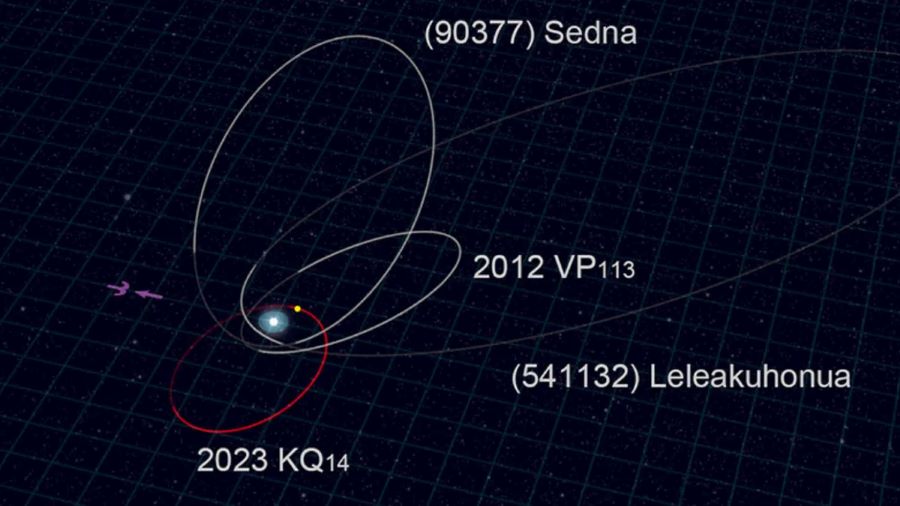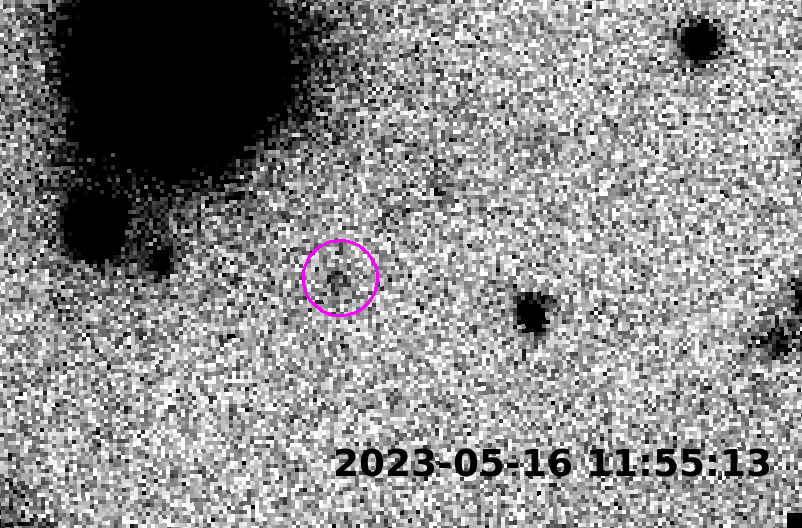[video] Astronomers discover a 4th sednoid in our Solar System
A team of astronomers has identified a massive object orbiting the Sun far beyond Pluto. The object’s unusual, stretched-out orbit hints that if "Planet Nine" exists, it could be much farther away than expected — or may have been completely ejected from the solar system.
The newly found body, labeled 2023 KQ14 and nicknamed "Ammonite," has been classified as a "sednoid" due to its bizarre orbit. Sednoids are distant trans-Neptunian objects (TNOs), found well beyond Neptune, notable for their extremely eccentric orbits and distant "perihelion" — the closest point to the Sun.
More to read:
Scientists talk about a hidden ninth planet in our Solar System - again
This discovery brings the total known sednoids (pictured below) to four.
For 2023 KQ14, its nearest distance to the Sun is around 71 times the Earth-Sun distance. Estimates put its size between 136 and 236 miles (220–380 kilometers) across — roughly 45 times taller than Mount Everest, according to the findings published in the journal Nature Astronomy.

Interestingly, 2023 KQ14’s orbit is distinct from the other three, despite appearing stable for the past 4.5 billion years. According to the discovery team, who used the Subaru Telescope as part of the Formation of the Outer Solar System: An Icy Legacy (FOSSIL) survey, these sednoids likely followed similar orbital paths about 4.2 billion years ago.
This suggests a significant disruption took place roughly 400 million years after the solar system's formation.
The peculiar orbit of 2023 KQ14 not only complicates our understanding of the outer solar system but also casts doubt on the existence of the theorized "Planet Nine."
More to read:
A planet-sized object travels through interstellar space 20 light-years from Earth
"The fact that 2023 KQ14's current orbit does not align with those of the other three sednoids lowers the likelihood of the Planet Nine hypothesis," team leader Yukun Huang of the National Astronomical Observatory of Japan said in a statement. "It is possible that a planet once existed in the Solar System but was later ejected, causing the unusual orbits we see today."
The object was first identified through observations from the Subaru Telescope on Hawaii’s Mauna Kea during March, May, and August 2023. Follow-up observations in July 2024 using the Canada-France-Hawaii Telescope confirmed its existence.

This animation shows the motion of Ammonite over several hours. Credit: FOSSIL
By combining this data with archival observations from other facilities, scientists traced 2023 KQ14’s orbit over the past 19 years. But its significance stretches much further back — likely forming alongside the young solar system about 4.6 billion years ago. This motivated astronomers to investigate its orbital history on a much grander timescale.
However, the discovery of 2023 KQ14 challenges existing theories because its orbit differs from the other known sednoids [see a video below].
More to read:
The Milky Way contains trillions of orphan planets
"2023 KQ14 was found in a region far away where Neptune's gravity has little influence," team member and planetary scientist Fumi Yoshida said. "The presence of objects with elongated orbits and large perihelion distances in this area implies that something extraordinary occurred during the ancient era when 2023 KQ14 formed.
"Understanding the orbital evolution and physical properties of these unique, distant objects is crucial for comprehending the full history of the solar system."
If Planet Nine does exist, it may lie even farther from the Sun than previously believed, he noted.







